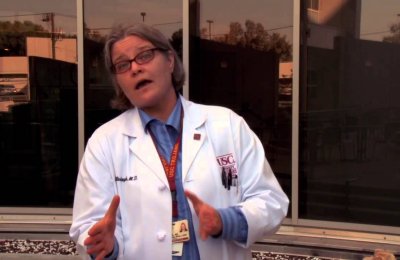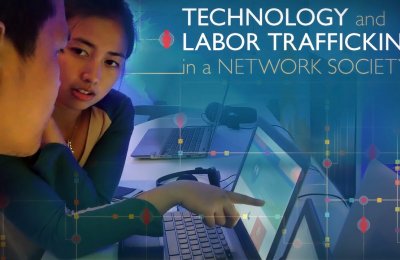By Gretchen Parker
A national enterprise we all take for granted – food banks – is getting a lot of attention these days, as a record recession straps home grocery budgets and the numbers of low-income families increase.
But most Americans don’t realize what a public health success story these agencies have to tell. And that it almost didn’t happen.
Over the last 20 years, one at a time, 156 food banks nationwide have begun stocking and distributing vast surpluses of fresh, nutritious produce that otherwise would have been dumped in landfills. It was a revolutionary change in the operation of food banks, which traditionally stocked canned and processed foods – cereal, soda, candy and convenience foods.
But transplanting that innovation from city to city didn’t happen on its own. Each program was initiated and nurtured by School of Communication professor Peter Clarke and his colleague, researcher Susan H. Evans (read more in a Jan. 31 USA Today article).
They stumbled upon this innovation in better nutrition in 1991, when they learned of a Los Angeles program started by veteran produce wholesaler Mickey Weiss. They thought it would take a year to teach food banks about the value of produce and kick off a chain of programs. It took two years just to get the first one running.
Now, for the first time, they’ve chronicled their two decades of trial and error in the hopes that other social innovators can learn from their mistakes – and successes. In an article published in the current Stanford Social Innovation Review (Winter, 2011) they recount their experiences in converting a nation of food banks into distributors of fresh fruits and vegetables.
It may seem an unlikely project for two academics. Clarke was dean of USC Annenberg at the time, and Evans was the school’s director of academic development. But they saw an opportunity they couldn’t turn away from: “We were looking at a potential major public health intervention the likes of which academic researchers can only dream,” they wrote in the Stanford journal.
And they thought it would be easy. It wasn’t. “We came up against a brick wall, and for the longest time we couldn’t figure out what we were doing wrong,” Clarke said. “That was the first two years. It was a long time in the wilderness – plenty of time to lose your enthusiasm.”
The problem was Clarke and Evans were trying to spark copycats of the LA program in other cities. They landed a grant and held a conference, but after the first year, the participants had made no substantial progress – even with constant prodding. They started to realize that transforming food bank operations was a complicated task, and that replication would not work. Each new program would have to be tailored to meet its own needs and overcome its own obstacles to nail the logistics of dealing with tons of food with a short shelf life.
With an intense refocus on customization instead of replication, they started in Baltimore –where they resorted to sending $1,000 of their own money to buy a food bank a new refrigerator and jumpstart a program. Next were Chicago, Dallas and Kansas City, Missouri. Then Annapolis, Maryland and St. Paul, Minnesota.
Once they started, they didn’t want to stop.
“When we had four cities up and running, we were delirious,” Evans said. “There was such joy and such delight, and it was so exciting to learn we could make this work in very different ways at each new site.”
Now the food banks they worked with are distributing more than 400 million pounds of fresh produce a year in 47 states.
“To be honest, their idea was initially met with, ‘You’re crazy – no way. It’s way too hard,’” said Kate Maehr, executive director and CEO of Chicago’s food bank, the Greater Chicago Food Depository. “For an organization that had a certain kind of operation, the obstacles just seemed insurmountable.”
Now, Maehr says: “We have a produce program because of Peter and Susan. They were the ones who came and said, ‘You need to do this.’”
The program that Clarke and Evans initiated in Chicago in 1994 now distributes 66 million pounds of produce a year to a network of 650 food pantries, kitchens and homeless shelters.
“It’s pretty remarkable,” Maehr said. “I have lots of people from academic organizations who have great ideas about what I can do, but they haven’t walked in these shoes. They don’t understand the obstacles we come up against. Peter and Susan are problem solvers. So, over the years, they’ve been connecting us to people with solutions, and they’ve understood that operational piece.”
Clarke and Evans became experts in everything from refrigeration, warehouses and forklifts to trucks, trailers and the electrical panels of local soup kitchens.
“They rolled up their sleeves, and they walked the walk. Peter and Susan have been down at the produce markets and the wholesaler markets with us. They have walked the floors of our warehouses, our food pantries and our soup kitchens,” Maehr said.
Even more than operations, Clarke and Evans changed the way Chicago and other cities think about food banking, she said.
“It’s not just a hunger issue; it’s a public health issue. If we don’t do this, low-income people won’t have access to fresh produce in our communities. And that’s all Peter and Susan,” she said.
Evans and Clarke had to teach food bankers about the public health consequences of the food they distributed and about trends in obesity and diabetes. It was a new way of thinking for food banks focused solely on getting food – just about any kind of food – to hungry people.
“I remember, almost 20 years ago, Susan was lecturing on me on something called ‘Type 2 diabetes.’ And we were just trying to help families get food,” said Eric Cooper, president and CEO of the San Antonio Food Bank. Cooper also worked with Clarke and Evans at food banks in Salt Lake City, Utah, and Dallas.
“It wasn’t easy. The produce would spoil, or it’s too ripe or rotten, and there are flies and disposal costs and refrigeration and all those barriers,” Cooper said. “But they just started to address them and look for ways to overcome them and find solutions.”
Clarke and Evans never let up.
“They were just very bold and aggressive and passionate, and you felt in their voices that they really believed in what they were doing and it helped you believe this was the right thing to do,” said Cooper. “They would challenge you to do it. You had to stop making excuses. You just had to do it.”
Clarke and Evans are still solving problems and driving innovation at food banks. But they hope the major lessons, recounted in their article, can influence an even wider field of innovators, especially those spreading social programs.
“There are all kinds of ‘orphan’ social innovations out there where people are doing something efficient and imaginative – whether it’s removing graffiti, improving literacy, or curbing teen pregnancy. If these talented and energetic people could learn from our lessons, they could make greater headway in getting these programs adopted in other cities across the country without the pain and struggle we endured,” Evans said.
USA Today article
More on Peter Clarke
What do you think? Join the conversation on our Facebook page .








